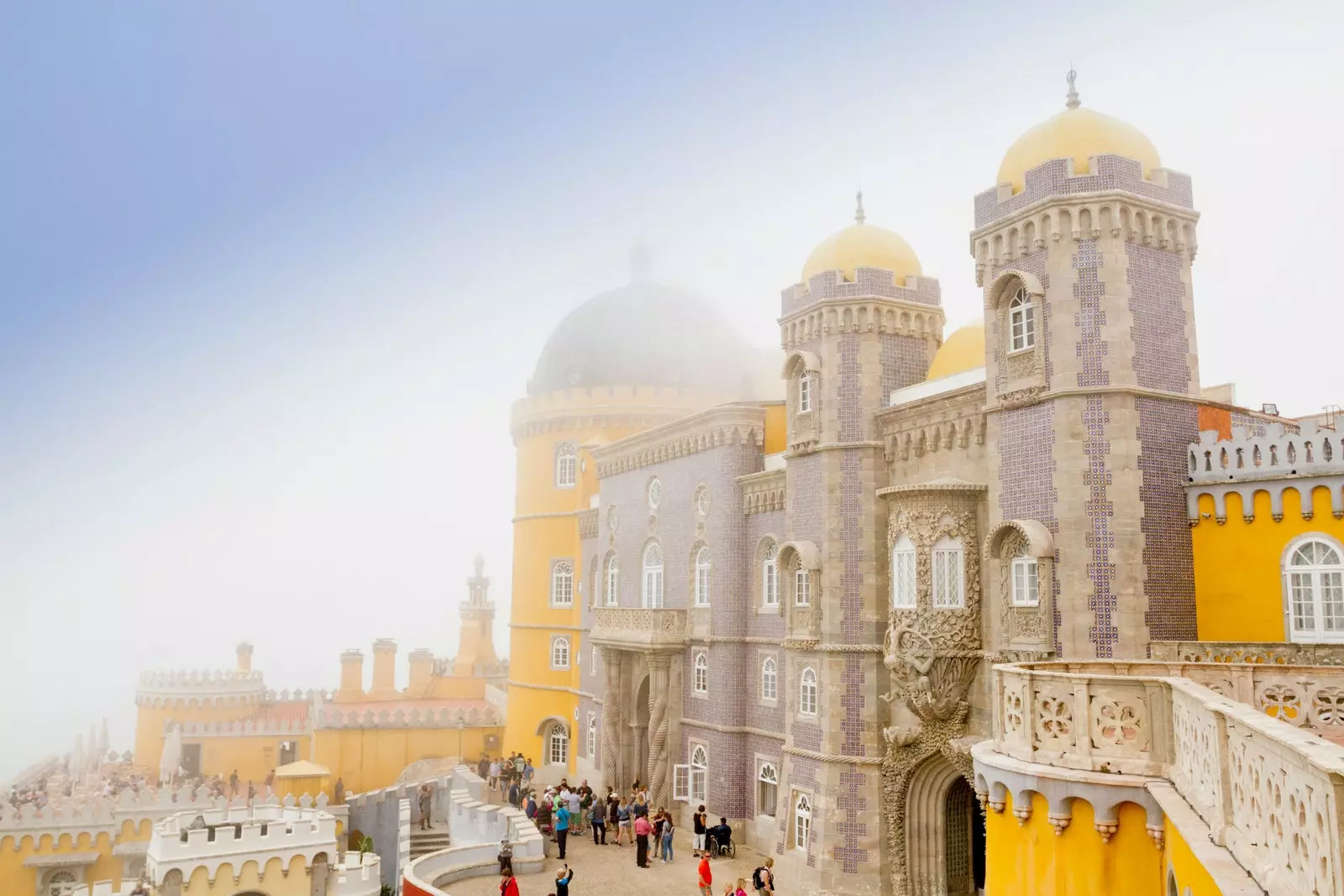
Pena Palace of Sintra
Surrounded by water, camouflaged between the density of the forests or dominating entire regions from the privileged heights. We do not know very well if it is due to the strength of the thousands of stories and legends that have them as protagonists, but the castles attract our gaze and curiosity deeply.
Huge constructions that served as a home for kings and emperors and that, despite their defensive function, their appearance sometimes seems straight out of old fairy tales.
Castles were places built to defend the susceptibility of a territory against foreign siege. Inside you can still breathe the memories of those who suffered defeat and exile, but they also hide the romanticism and melancholy of those times in which they were epicenters of identity and longing for their conquerors.
Today, despite the attacks, they are the ones who have remained here, scattered throughout the world, to conquer us.
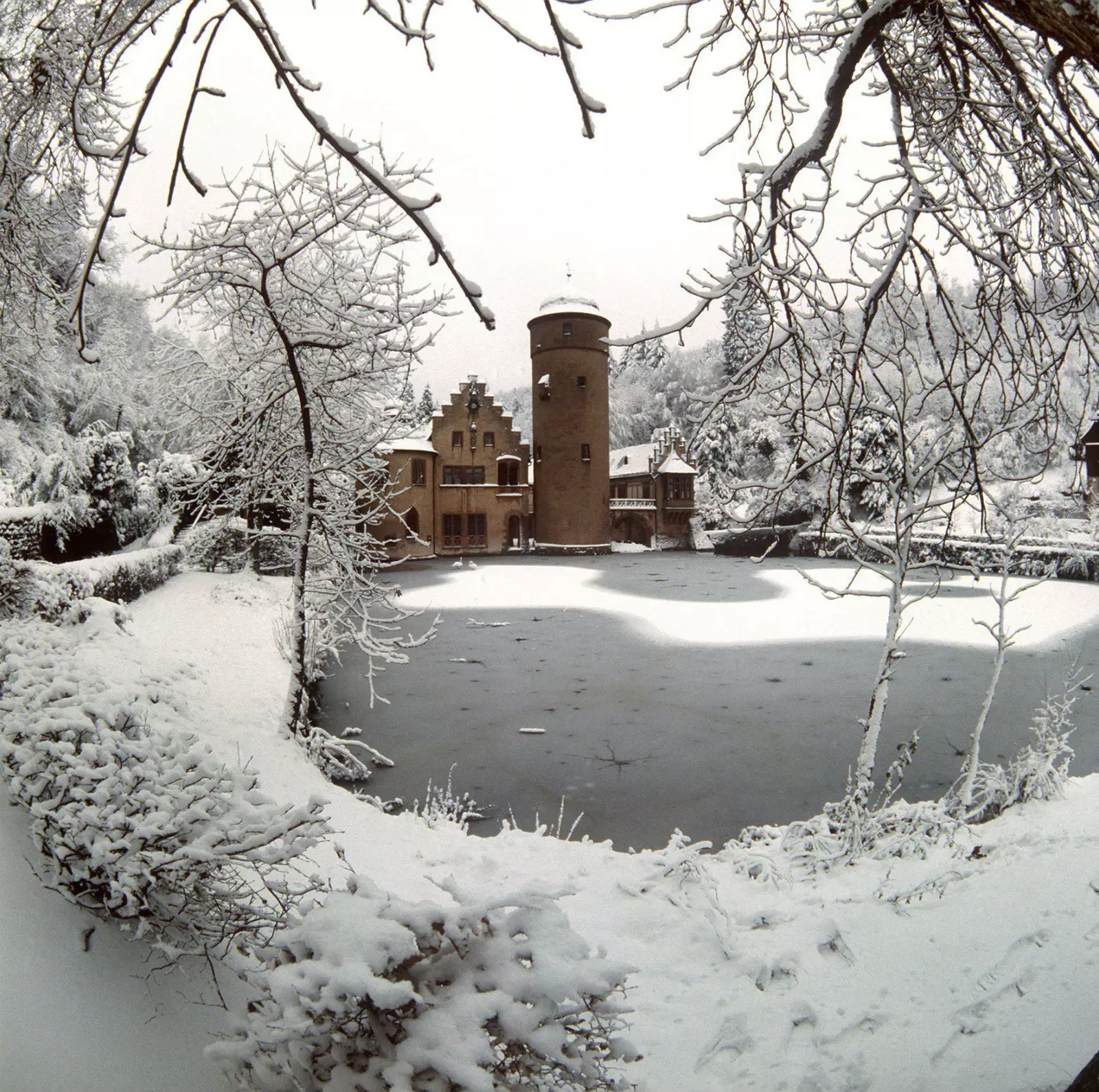
Mespelbrunn Castle
MESPELBRUNN CASTLE
If there is a title that has been won Germany It's of " land of castles ”, since all its territory is dotted with these majestic constructions. In the small town of Mespelbrunn , very close to Frankfurt , rises, in the middle of the forest, the Mespelbrunn Castle, one of the most picturesque in northern Bavaria.
because of his style Renaissance and the idyllic natural environment that surrounds it, makes us feel fully Middle Ages . The absolute calm of the place and the thickness of the Spessart Forest they make the construction emerge almost by magic, projecting its reflection in the calm waters of the pond that protects it.
the of Mespelbrunn is one of the few german castles that have managed to preserve their original state, without giving in to the ravages of time. Although its origins go back to the XV century , what we can see today, with the exception of the cylindrical tower, is the result of a reconstruction at the end of the 16th century.
The rooms of one of the wings of the castle are still inhabited by their owners, the Echter von Mespelbrunn family . Despite this, it is open to the public, with rooms, patios and a valuable collection of porcelain, furniture and paintings open to visitors; which gives them an income with which they can keep the building in good condition.
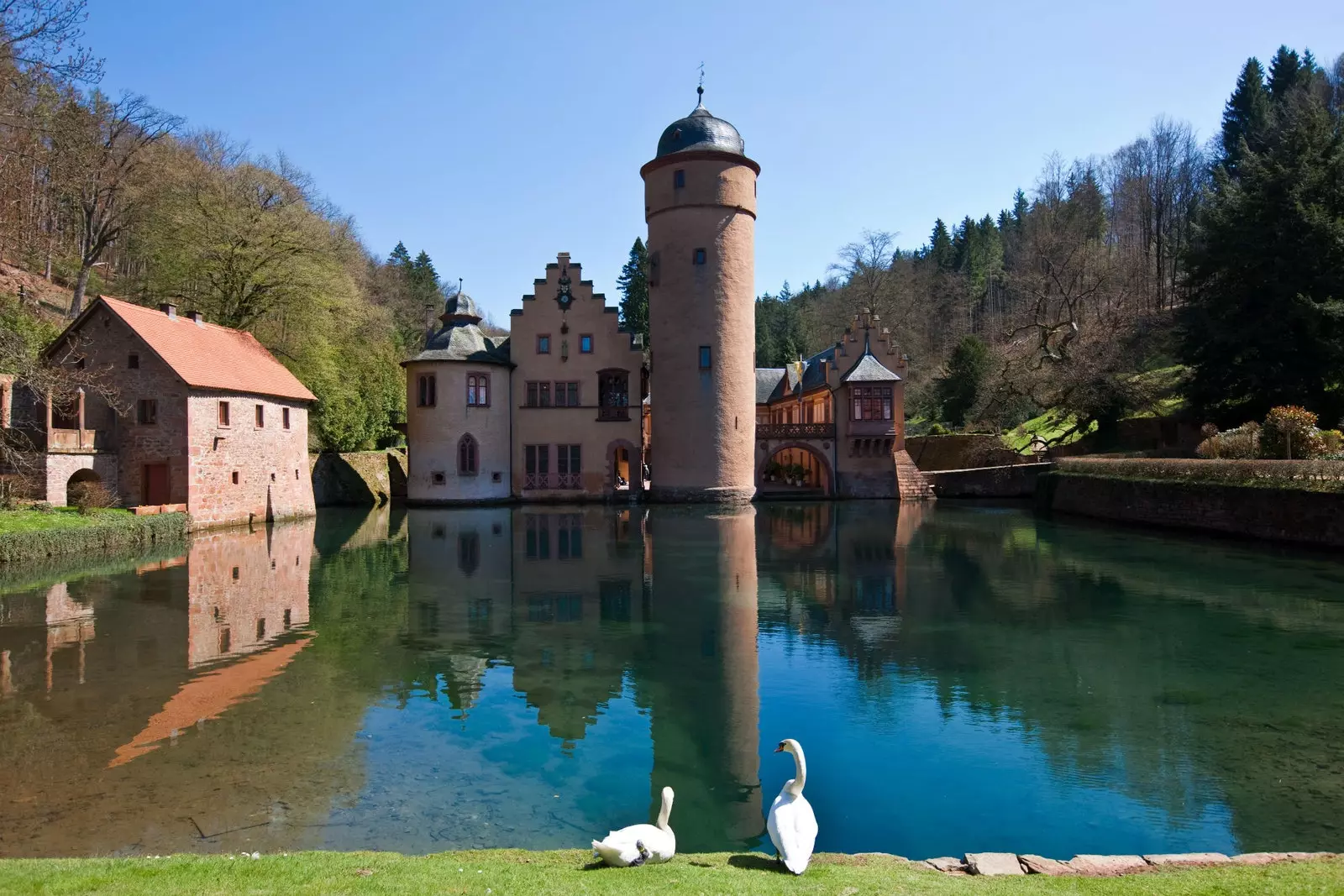
Mespelbrunn Castle
ALCAZAR OF SEGOVIA
the castle in which Snow White She lived with her stepmother before “moving” to the dwarfs' house, she is actually in Spain. In Segovia, to be more exact. And it is that they say that their Alcazar served as the inspiration for said Disney film. Visiting this symbol of Spanish art and history is one of the most characteristic activities for those who visit the city.
The castle has been modified and remodeled on various occasions and has served as a fortress, royal palace, state prison, artillery center and military academy since it was built in the 12th century on the remains of an Arab fortification after the Christian reconquest of the city.
Although it is believed that there may already have been a construction in Roman times on the site. Its construction adapts to the orography of the hill on which it is erected, giving it the appearance of a ship's prow.
The current reform took place at the time of transition between the Romanesque and the Gothic, so you can perfectly appreciate the sober and elegant Cistercian style . One of the many curious events that took place in the complex is that when King Alfonso X was inside, the part of the castle in which he was found collapsed, leaving the monarch unharmed from such a catastrophe.
Years later it was shored up and improved to prevent something similar from happening again. The current tourist visit It goes through military archives, the armory and some interior rooms, as well as two patios.
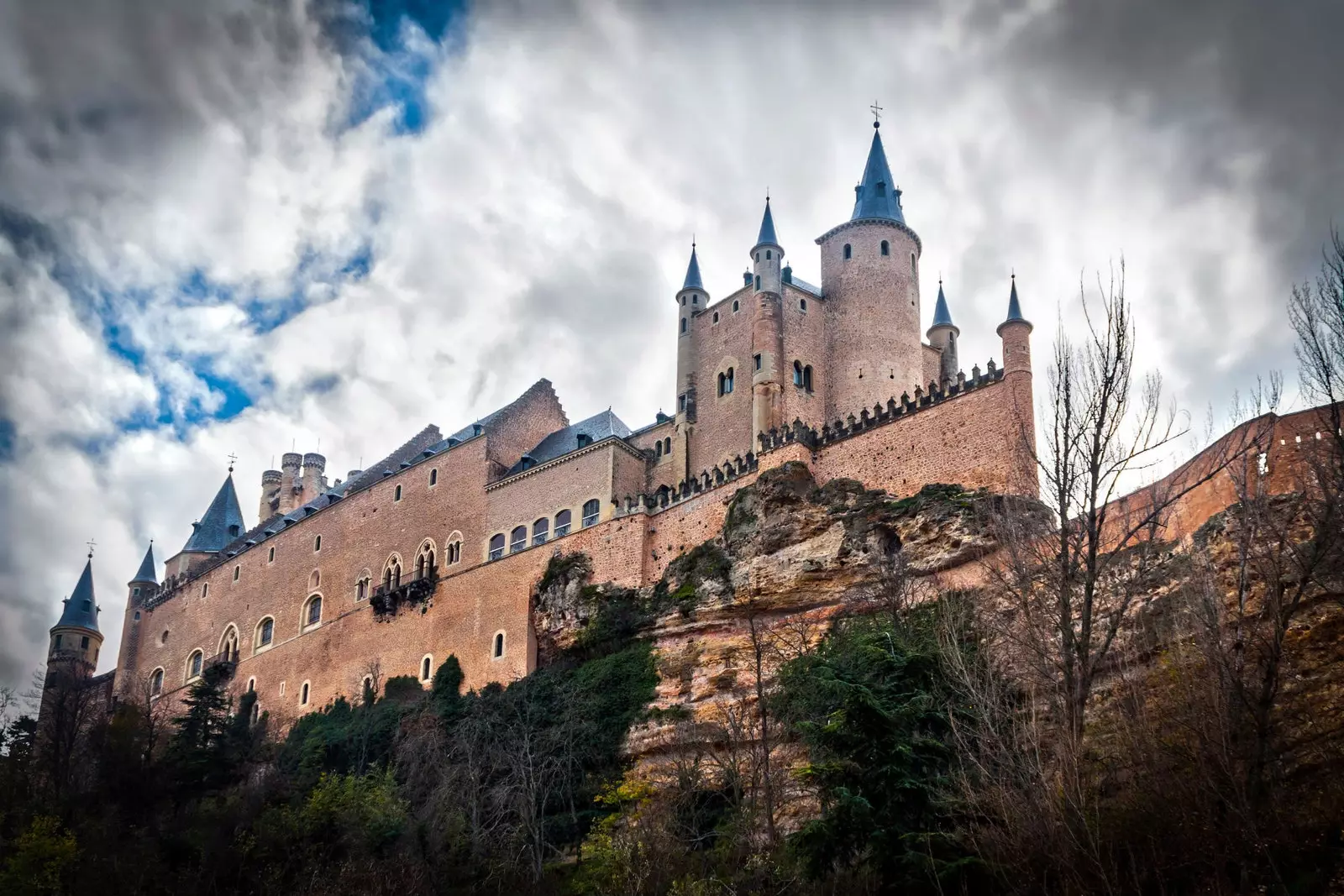
The Alcazar of Segovia
PALACIO DA PENA
Once upon a time in Portugal, there was a beautiful town that, covered by forests and climbing a mountain, served as a summer retreat for the monarchs of the country. Once upon a time, Sintra .
They say that this town, decorated by castles, palaces and dream gardens, is the capital of romanticism. has been declared World Heritage, and every inch, every stone, every steep street is protected by UNESCO.
Nestled in the middle of Sintra-Cascais Natural Park, The picturesque Sintra is a daily attraction for thousands of tourists who come to it to enjoy its nineteenth-century architecture more typical of fantastic legends than real life.
For the same reasons, it became the maximum representative of the Portuguese Romanticism of the 19th century and its aura attracted kings, monks, extravagant millionaires and young artists who toured the European continent, thus becoming a refuge for writers of the stature of Lord Byron - who described her as a “glorious Eden”- or Hans Christian Andersen.
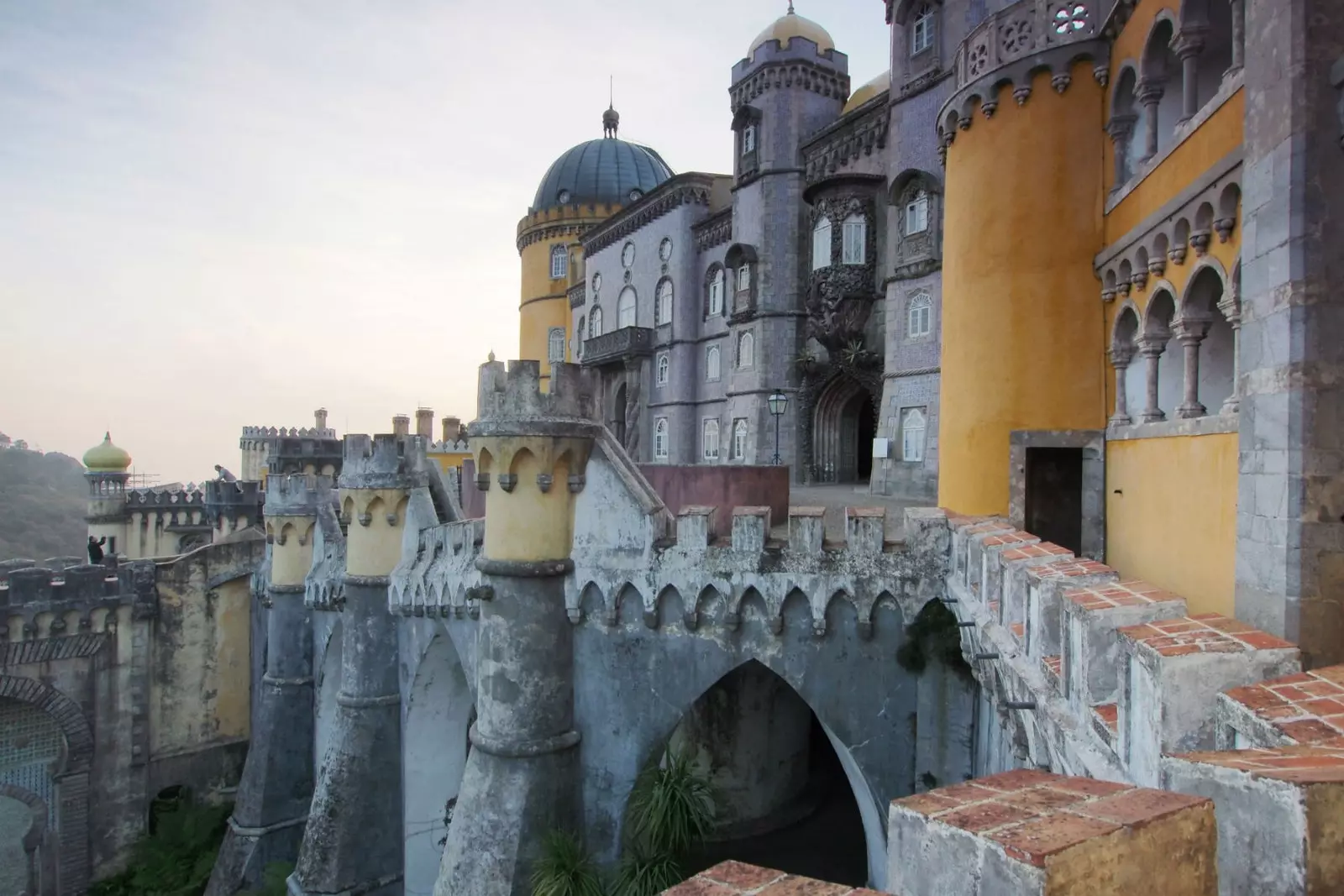
Pena Palace in Sintra
However, of the many palaces and castles that extend between its hills always hidden in the Atlantic fog, it is the Pena Palace the "pretty girl" of the city and probably the one who paved the way for fairy tales to Sintra.
Settled on the highest peak of the mountain range, the colorful palace watches over the town, one of the most famous monuments in the country and maximum exponent of the extravagance that inhabits the place.
It was built as a summer residence by the “ king artist”, Ferdinand II , Mid-nineteenth century. Its architecture shows us a variety of historical styles with influences from the Gothic, the Manueline, the Muslim and the Renaissance.
The imposing palace, surrounded by lush gardens, differentiates each artistic style with a color: yellow, burgundy and mauve, giving it a psychedelic air capable of transporting those who come to visit it to the magical worlds of cartoons.
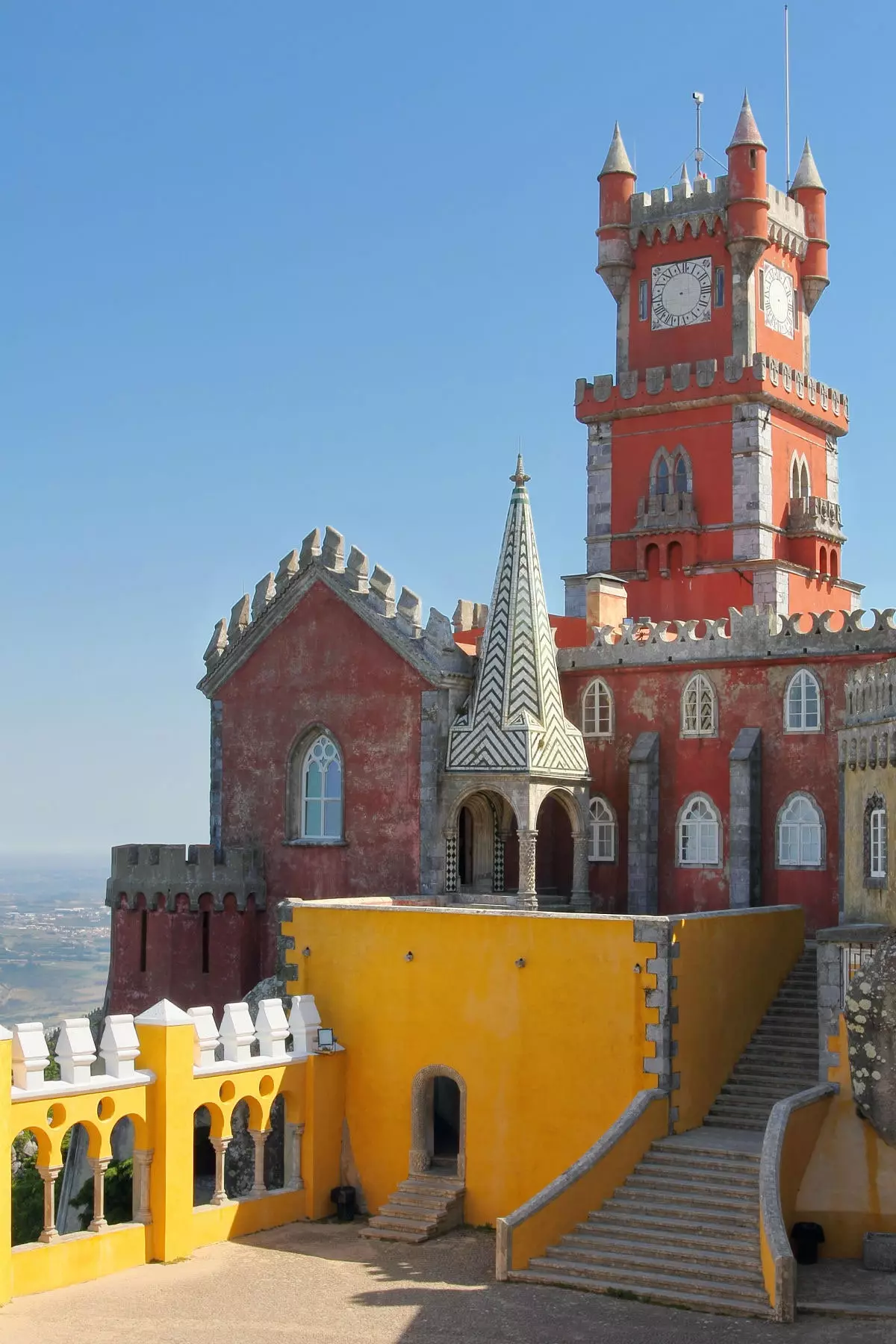
The impressive and colorful façade of the Palacio da Pena
HIMEJI CASTLE
Poetically known as the Castillo de la Garza Blanca, the himeji castle It is one of the most beautiful and extraordinary medieval buildings in Japan.
There are several theories that try to give rise to this curious nickname, some believe that it is due to the mount sagiyama (Monte de la Garza) in which it is located, or perhaps it is because of the white herons that live in the area, although the one that seems to make the most sense is that it owes its name to the white color of the plaster that covers its façade.
A very important material for this work, since it not only serves to give it this pristine decorative tone, but also it is fireproof and serves to protect its interior, made entirely of wood. They say that on days when the sky is cloudy and whitish, it is almost impossible to differentiate the silhouette of the castle in the landscape.
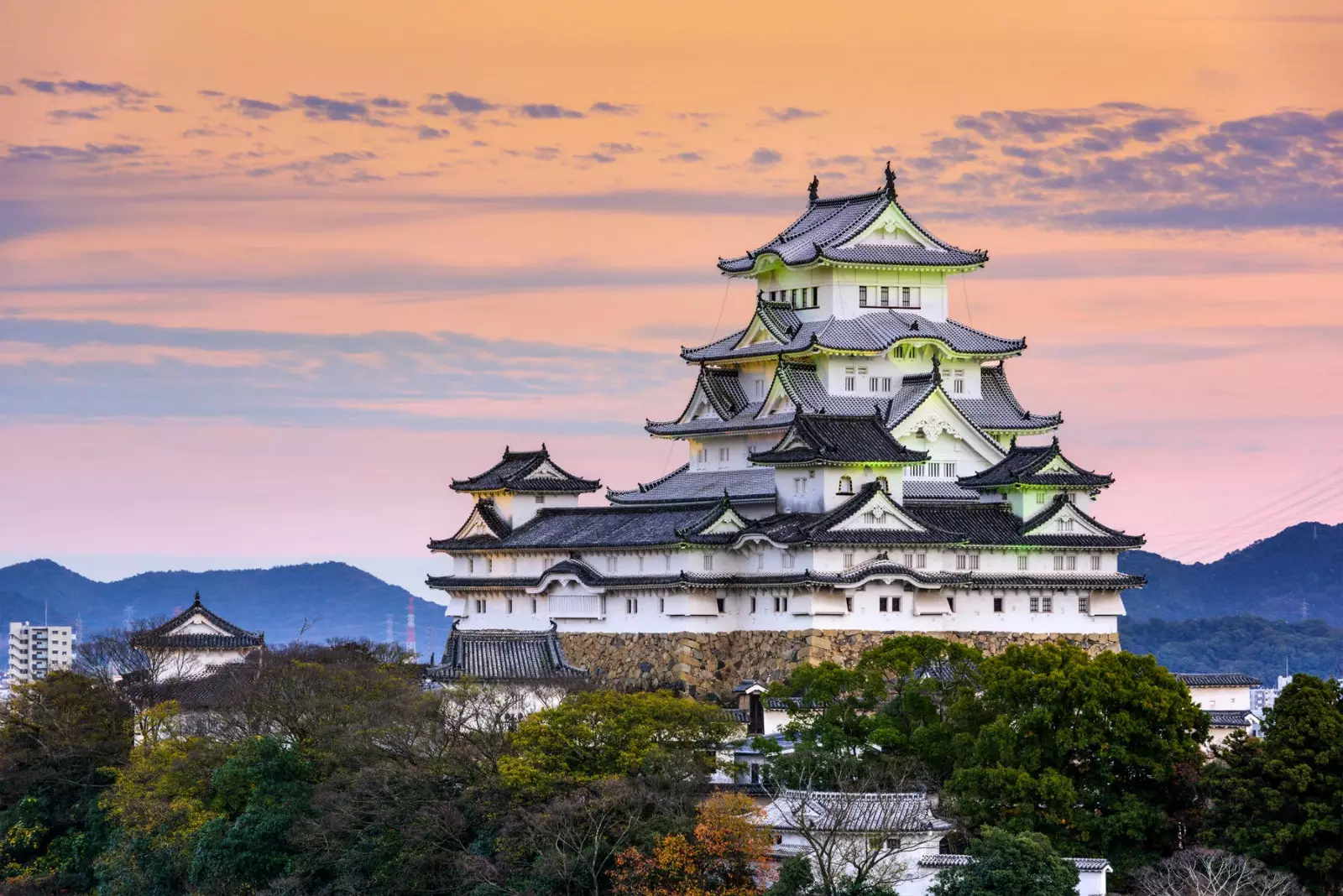
Himeji and its fireproof exterior
It is located in the homonymous city and is a perfect example of the architecture of the Japanese castles. It is well known due to its spectacular main tower -tenshu in Japanese- and for the extremely complex defensive design that was created to protect it, made up of passageways, walls and ramparts, doors and secret rooms and a labyrinth with the intention of confusing invaders and be able to attack them more quickly.
To this day, despite the route is perfect and clearly marked, more than a few visitors get lost before reaching the main tower. It dates from 1346, when Japan lived in the middle of feudal times. and still retains some rooms that have not been modified since the medieval period.
It is not difficult to put our imagination to work and recreate scenes of great battles in the days of the civil wars of the daimyo -feudal sovereigns-, although the Castillo de la Garza was never taken by the invading armies.
If after seeing these fantasy-looking castles your conquering soul has awakened, you are in luck, because you still have time to travel the world like that famous squirrel that could cross Spain from tree to tree without having to step on the ground. In your case, visiting country to country, from castle to castle.
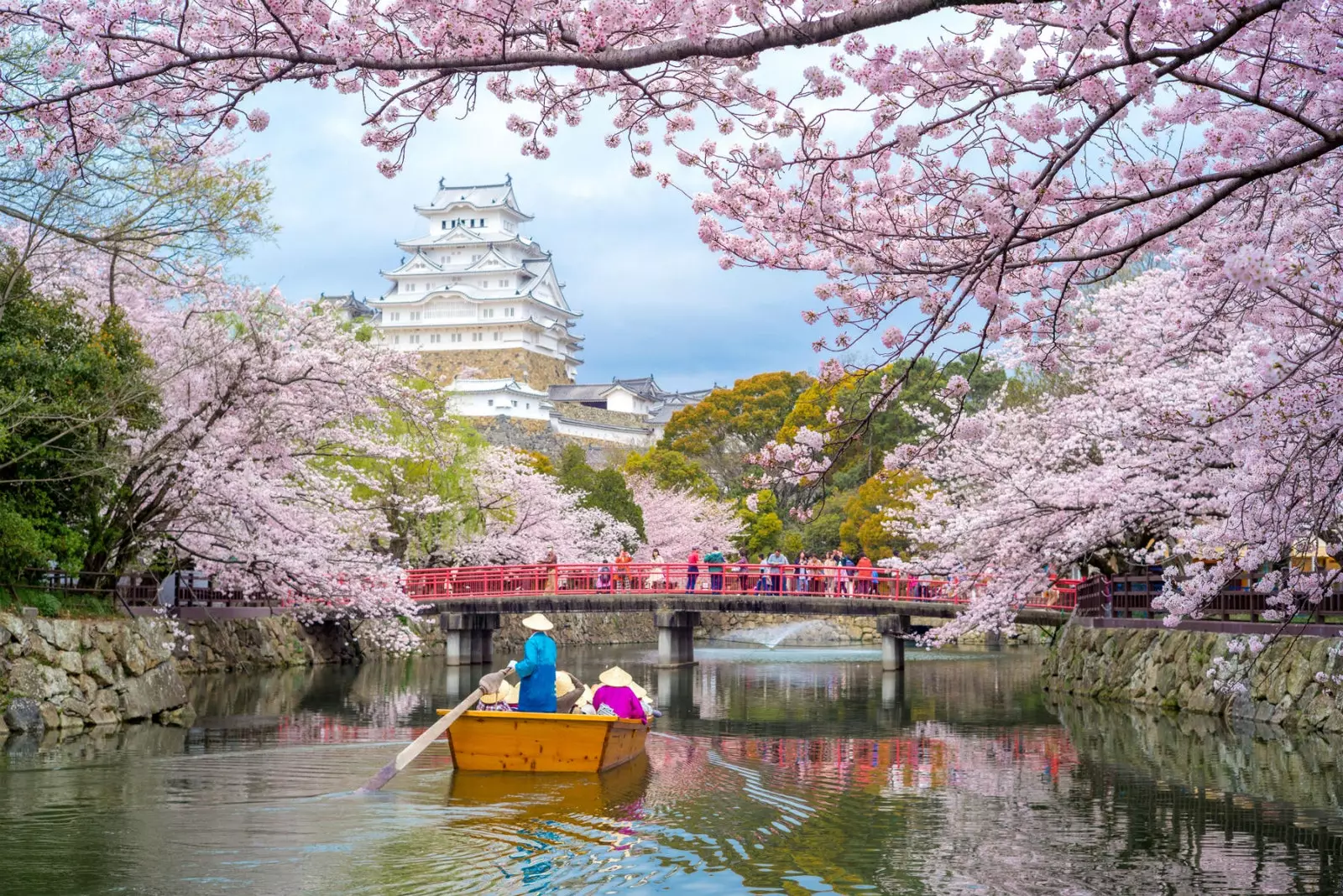
himeji castle
